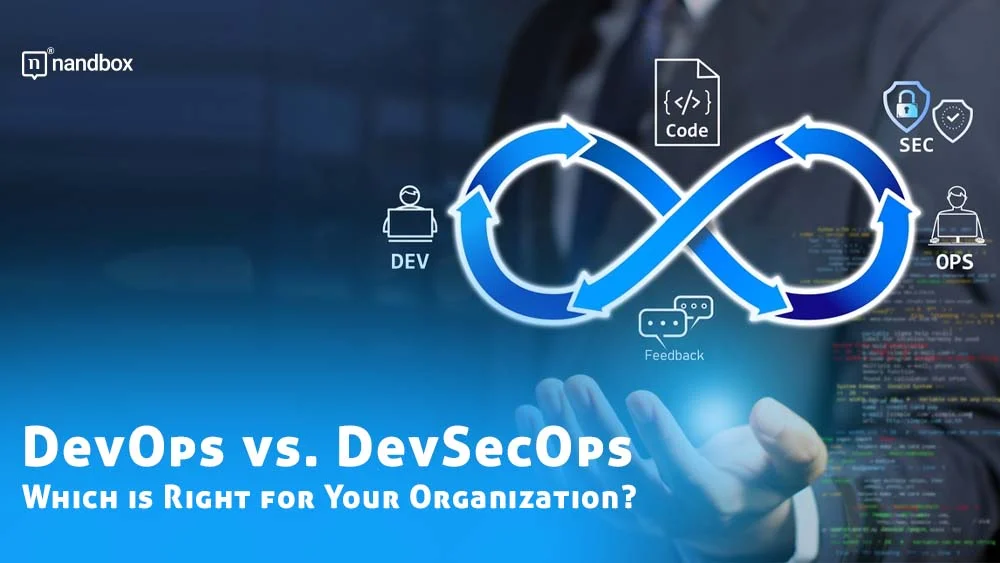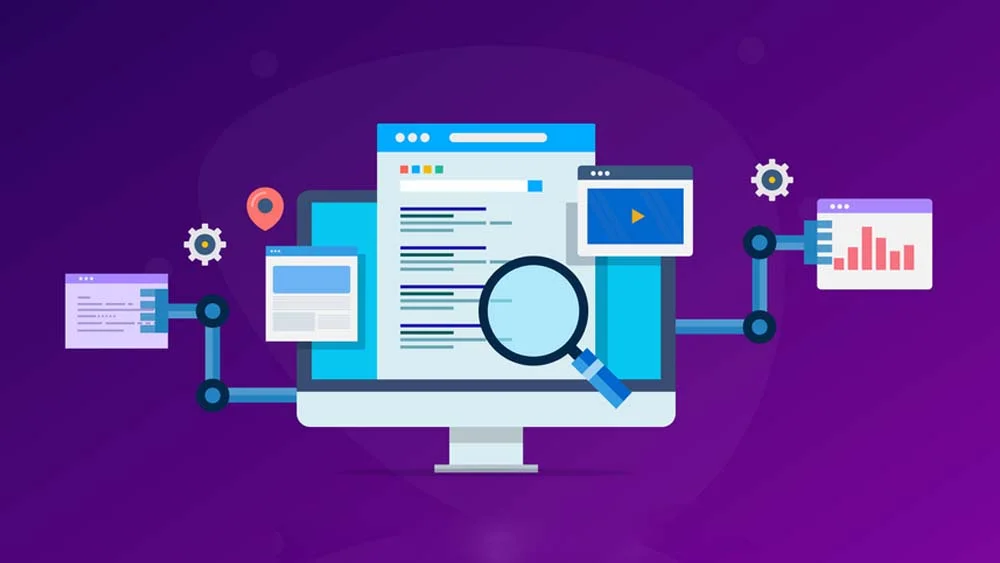The Battle of Efficiency: Exploring the Differences Between DevOps vs DevSecOps
In an era where speed and security are paramount, the battle for efficiency has taken center stage in the world of software development. DevOps Vs. DevSecOps, two methodologies that have revolutionized the industry, have emerged as frontrunners in this ongoing competition. But what sets them apart? In this article, we will delve into the differences between DevOps and DevSecOps, dissecting their unique approaches and exploring how they can transform the way organizations build and deploy software.
What Is DevOps, and How Did It Start?
Before conducting our DevOps vs. DevSecOps comparison, let us get a brief knowledge of each approach. Before DevOps started as an actual technological and practical development method, it started as a culture and movement. Around the mid-2000s, two of the most integral parts of any organization started getting together in hopes of coming up with tech solutions. The main aim of these solutions is to make businesses able to adapt to the fast-growing industries they compete in. These two integral parts were the software development and IT operations departments. I know, extremely important. The point that they were discussing and trying to solve was the fact that they both work on the same codes and processes, yet they are apart. This, of course, impacted the development process due to communication issues and conflicting objectives. In this case, they needed to unite forces and powers, and that is how the term and method of DevOps appeared.
So, to summarize this interesting story, DevOps is the combination of “development” and “operations.” It describes a novel method of development. This approach combines the tools, power, and procedures of the development team and operations team across the organization.
DevOps is all about the power of collaborative work and effort to produce effective and efficient outcomes. This comes in opposition to the distant work that is usually found in all businesses.
The Emergence of DevSecOps
As the development landscape evolved a bit more, the DevOps approach needed some upgrades. Recently, software development started moving towards cloud services due to the plethora of advantages they provide. Scalability, flexibility, and effectiveness are very attractive package deals that no one can refuse. However, to be able to use cloud solutions, developers had to find a way to make them secure for themselves and their users as well. This is when they turned to their ultimate method and made some modifications here and there. And this is when DevSecOps emerged as an evolution of DevOps. DevSecOps has mainly the same set of procedures and tools as DevOps, with the same collaborative efforts between operations and development. However, what DevSecOps has included is security.
The main priority of DevSecOps is emphasizing security and making it the central focus of each and every stage of the process. Back in the day, security would be the last step to implement in any software development process. This, unfortunately, made many software and apps vulnerable to security breaches and attacks. The implementation of the DevSecOps method lessened the probability and likelihood of such breaches happening, as it secured an extra layer of security for each development cycle. Since then, the major comparison of DevOps vs. DevSecOps started.
What Recent Gains Did DevSecOps Introduce To Organizations?
The last section really gave a glimpse of how important DevSecOps are. But what are the gains that an organization would achieve by implementing DevSecOps? The first, and very obvious, advantage is enhanced and maximized security. DevSecOps now starts focusing on security the minute the development stage begins. This extensive focus in the early stages makes it easier and more seamless to identify and fix any flaws, bugs, or errors that may cause problems along the way or later on upon deployment.
The second gain that really concerns organizations is the speed of development. DevSecOps improves the efficiency of the whole development process. Developers and collaborative teams working on the software or applications have to handle everything instantly and ensure the security and effectiveness of each cycle of the development process at once. This allows them to wrap up the work and create fully functional and secure applications faster than usual.
The last advantage of this section (well, not overall, there are still many to discover) is adaptability. We’ve established that the DevSecOps teams are times faster in development and review than usual. This gives such teams the chance to keep up with all the latest software and application trends. Once they can find something that could really benefit their software, they could start integrating these changes and new technologies.
All these advantages made DevSecOps very essential for developing applications, especially for the new app categories. These app categories usually require maximum security due to their nature of containing sensitive information about users, such as healthcare and education apps.
DevOps Vs DevSecOps Lifecycles
You might think that since DevSecOps is an outcome of DevOps, they’d have the same processes and cycles. Well, this is completely wrong. As similar as they can be in the core, and sometimes in the tools and procedures used. DevSecOps and DevOps have completely different lifecycles. So, let us compare them both
Starting with the main concept, DevOps. It consists of eight consequent stages, where no stage can be completed without the others.
DevOps Cycle
| DevOps | Cycles |
Plan |
Throughout this phase, both teams—the operational and development teams—start to gather everything they can regarding need and demand in the market. This gives them the chance to see what they are working with and how their product could fulfill these needs. After gathering all the information needed, the plan is set to follow. |
Code |
This phase includes all the magic done from the development team’s end. Throughout this phase, all the codes needed would be written, usually using DevOps tools and practices to make the process faster and easier. |
Build |
After completing the coding phase, the development team would move on to constructing the codes in the format required by the application or software. Developers can use tools like Git to go through this phase. |
Test |
Nothing can pass without testing. In this phase, both teams run various tests on the initial application or software to make sure that any pitfalls or errors are fixed before the deployment and release of the product. They can also ensure the quality of the codes they build. |
Release |
This phase is where the operational side steps in. The release phase is when the final version is reviewed one final time by going into an environment the same as the production. This ensures that there were no errors that were overlooked during testing. |
Deploy |
Finally, it is time to shine. The deployment phase is where the application or software gets approval to be officially moved into production. It can now be released publicly and used by end-users |
Operate |
After the product is now in use, the DevOps team is now on an operating mission to manage and keep an eye on the app or software’s performance. They will also offer support to users. |
Monitor |
After users start to engage and interact with the application or software. The DevOps team starts to monitor these interactions to learn more about the user’s behavior and needs. This will help them to make changes in the future based on what they monitored and the data they gathered. |
DevSecOps Cycle
Unlike the eight lengthy stages of DevOps, the lifecycle of DevSecOps consists of six cycles, where each stage is also very dependent on the previous one and how well it was conducted. Although the stages of DevSecOps match those found in the DevOps cycle, they differ in what each calls for.
| DevSecOps | Cycles |
Plan |
The first step is planning. In this step, the main focus is on security. Unlike the planning stage in DevOps, which focused on gathering info about the market needs. Here both the operational and development teams start planning the strategies and tools they will use and apply. And what would provide them with the ultimate security and optimal results? |
Code |
In the coding stage, magic still happens. But this time, it is not necessarily for the sake of making the process faster and seamless but for making it secure. Throughout the stage and while crafting the code, developers take all the security practices and measures possible to add a layer of security to the codebase. |
Build |
It is building time! As in any building stage, developers start constructing the codes written to transform them into the software or application structures, functions, features, etc. What is different here is that all the codes written have to pass through and implement security measures and practices. |
| Test | Here comes the mega stage of DevSecOps. Well, logically, testing is a major part of ensuring security. This is exactly why this stage might be the longest and most effort- and time-consuming of all DevSecOps stages. The software or application built in the previous stage runs through extensive and thorough testing environments like dynamic application security testing. I know, it sounds very serious. This ensures the testing for basic and advanced threats to ensure ultimate security. |
Release |
Phew, what a cycle, am I right? Now that the team made sure that the application or software is secure and threat-free, it is now time to see how it would perform under real circumstances. In this stage, the It operations team starts running the software on real environments to see how it would perform. And in DevSecOps, this also includes real breaches and threats to see whether it is secure or not. Upon finding any flaw that somehow passed the tests, it would be fixed at once. |
Deploy |
Congratulations! You’ve reached the end of the DevSecOps cycle. The Deployment is the final stage. Now that the teams validate the application or software, run it through extensive tests, and altered what needs alterations. It is ready to be used by end users without any hesitation or concerns about security breaches or flaws. |
Challenges and Considerations for Adopting DevSecOps
While the benefits of DevSecOps are significant, organizations must also consider the challenges and potential roadblocks when adopting this methodology. Some of the key challenges and considerations include:
Cultural shift
DevSecOps implementation usually requires a shift in business culture. Security must be valued and integrated into every stage of software development, which calls for the elimination of silos, the encouragement of collaboration, and the establishment of a culture where security is prioritized.
Skills and Expertise

DevSecOps cannot be implemented without a team of professionals with extensive experience in both software development and security. In order to successfully implement DevSecOps, companies may need to invest in training and upskilling their teams.
Tooling and Automation
Automation and tooling are fundamental to DevSecOps as they allow for the simplification of the development process and the incorporation of security procedures. When it comes to meeting their unique needs, businesses must carefully assess and choose the appropriate technologies and tools.
Continuous Learning and Improvement
Due to the ever-changing nature of security threats and best practices, organizations must keep up with DevSecOps. This necessitates dedication to continuous learning and growth, as well as being ahead of new developments in the field of cybersecurity.
The Ultimate Battle of Approaches: DevOps vs DevSecOps
While DevOps and DevSecOps share common goals and principles, there are several key differences between the two methodologies. These differences lie primarily in the areas of focus and the level of integration of security practices. Let’s explore some of the key differences:
The degree of security integration is the primary distinction between DevOps Vs. DevSecOps. When compared to DevSecOps, which integrates security practices across the entire software development lifecycle, DevOps primarily focuses on collaboration, automation, and continuous integration and delivery.
Another major distinction is that in DevOps, the duty of ensuring the software’s security falls on both the shoulders of the developers and the operations teams. Everyone in the organization is responsible for security in a DevSecOps environment, and the security team has a more hands-on role in the development process.
DevSecOps also takes a “shift-left” approach to security, which means precautions are taken early in the development process. By finding and fixing security flaws as soon as they are discovered, this method helps reduce the likelihood that a security breach will occur. On the other hand, DevOps focuses on security in the last stages of development. Meaning that after ensuring the maximum and ultimate delivery for users, DevOps starts to see what security practices can be implied.
Choosing the Right Approach for Your Organization
In the battle for efficiency of DevOps Vs. DevSecOps, both offer compelling approaches to software development. DevOps focuses on collaboration, automation, and continuous integration, enabling organizations to deliver software updates at a faster pace.
On the other hand, DevSecOps extends the DevOps principles to include security, ensuring that security is not an afterthought but an integral part of the development process. When choosing the right approach for your organization, consider your specific needs, goals, and the level of security required for your software. DevOps may be suitable if your primary focus is on speed, collaboration, and continuous delivery. On the other hand, if security is a significant concern, DevSecOps provides a more comprehensive approach that integrates security practices throughout the development lifecycle.
DevOps vs. DevSecOps? That is a question that can only be answered by considering your company’s specific needs and priorities. By understanding the differences and benefits of each methodology, you can make an informed decision that will unlock the power of efficiency and embrace the future of software development.




